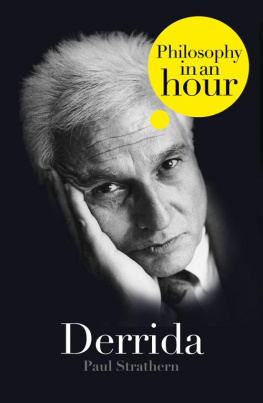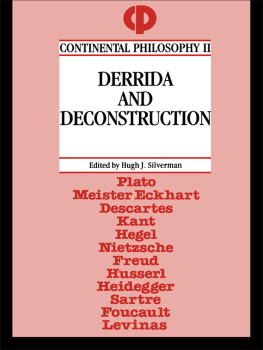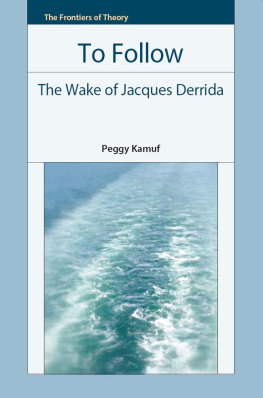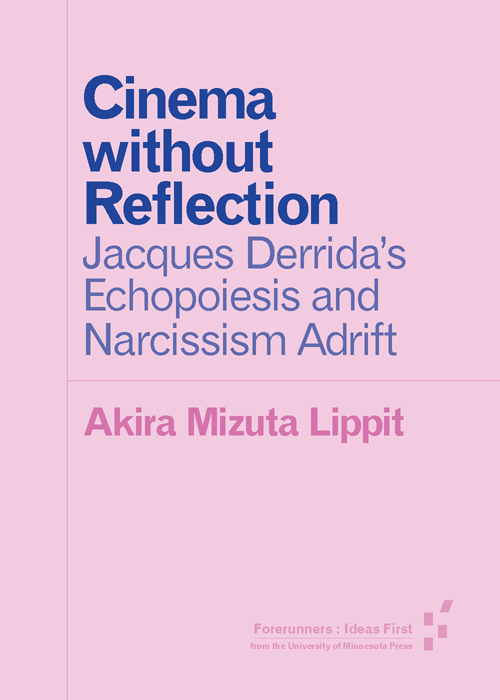An earlier version of this text appeared as Plus Surplus Love: Jacques Derridas Echopoiesis and Narcissism Adrift, Discourse 37, nos. 12 (2015): 87116.
All rights reserved. No part of this publication may be reproduced, stored in a retrieval system, or transmitted, in any form or by any means, electronic, mechanical, photocopying, recording, or otherwise, without the prior written permission of the publisher.
The University of Minnesota is an equal-opportunity educator and employer.
In lieu of a preface, a brief reflection on the body to come. Or rather, on a body that has come and gone, and come back. A reflection on but also of a body yet to appear, in advance, a preflection. This face improper to the body it reflects, turns, returns, and turns away; acephalic and without sovereignty. What comes before even the preface, a look without form, without even eyes. In lieu of a preface because the body to come is itself a preface, unformed. A face in excess, surface, an inscription that takes place in lieu of any place within or without the text, faceless save in reflection. Such preflections are also reflections in reverse; images without origin in the world.
More than ten years after his death, Jacques Derridas thought lingers in the field of cinema. His face appears on its screens in more places than one. A face become surface that survives. Without designating cinema as an object of inquiry, as he did with painting, photography, video, and television, to name some of the media he did speak and write about, Derrida gestures toward cinema, speaking of and to it in passing, provoking a series of spectralities that allow him to appear and disappear in the passage. His is a theory of cinema en passant. It leaves no reflection.
Derridas phantom intervention on cinema is bound to his discourses on spectrality, autobiography, and narcissism; it is a thought that effaces the sovereignty of thought as such but that resurfaces frequently in the many visages that form his oeuvre. Yet what remains unthought is the influence that Derridas corpus has had on the study of cinema and its praxes. They are refractions perhaps, rather than a series of sustained reflections, typically appearing in the trajectory of another thought, although in some instances, he addressed the camera and spoke of projection, eye-lines, and the science of phantoms. The work of thinking through these flashes or glimpses without an oeuvre remains among the tasks of following Jacques Derrida.
What follows, then, remains a draft, a sketch or design of a work that might one day or one night appear. But this draft is also a current of air: slight shifts in the environment one senses in the presence of a specter. Draft, drift, thought adrift, to borrow Derridas idiom. A specular machine meant to forge an encounter between Derridas oeuvre and the thought of cinema, a spectral reunion achieved in the postponed temporalities of a poetics in reverse, anniverse. Its objective is to trace some of the many contours in Derridas thought that appear to point toward the cinema and that form deictically a secret thesis on film, written elsewhere, a scrypt.
Timothy Holland and James Leo Cahill organized a special issue of Discourse, in which a portion of this work appeared; both are also critical interlocutors in this project. I am grateful to both for their invaluable suggestions. Ozawa Kyoko translated an earlier and abridged version of the piece into Japanese for Shis. I am indebted to her for her careful work and many insights. A brief selection of this work appears in French translation, in Rue Descartes. Safaa Fathy, Jennifer Fay, Julin Gutirrez-Albilla, Scott Juengel, Peggy Kamuf, and Panivong Norindr offered generous responses at various stages of the work, as did lively interlocutors in Paris and Prague and at the University of Michigan, Vanderbilt University, and the University of Southern California, where I had the opportunity to present portions of this work.
Tears that see. Do you believe?
Jacques Derrida, Memoirs of the Blind
Even if one were to believe in the melancholic visuality of tears, what do tears see? Tears that suffuse the eyes and distance sight while making tears themselves visible, can they see anything beyond the visuality of tears as such? And which tears? Tears or tears? The homophony of tears binds the two forms of tearing together. Tears are fluids and lacerations that prevent ones eyes from seeing everything, or even anything; from seeing enough to believe. Tears prevent me from seeing you. Through tears, one sees only tears. In place of what one does not see, one sees that one does not see. What might it mean to see that one does not see, to see unseeingness in the form of tears? Is there a mode of seeing unique to tears?
To tear, two words folded into a single grapheme, indistinguishable until uttered. How to know the difference between a tear (that drops) and a tear (that cuts)? The difference between two forms of tearing? Each effects a veil that keeps me from seeing, from a perspective that would incite my subjectivity as voyeur. Each keeps me from the reciprocity of vision, from an economy of seeing that would return through you to me. Instead, I see through tears, only a reflection, myself. (Tears that remain in the eyes form liquid and fractured mirrors, restraining vision within the eye.) What I see through tears are tears. Myself reflected in the liquids and lacerations that prevent me from seeing outside. In such returns, I am lost to the world as a seeing subject, as the subject of the visible. And if I cannot see beyond a torn visuality, then who sees in my place and in place of me, you? Do you see? Do tears implant another point of view in lieu of me? If a certain history of vision and of visuality has been built on the premise of a subject that seesI see, videothen might one imagine another history of vision and visuality, a second history located in what











